Commemorating the AC Cobra
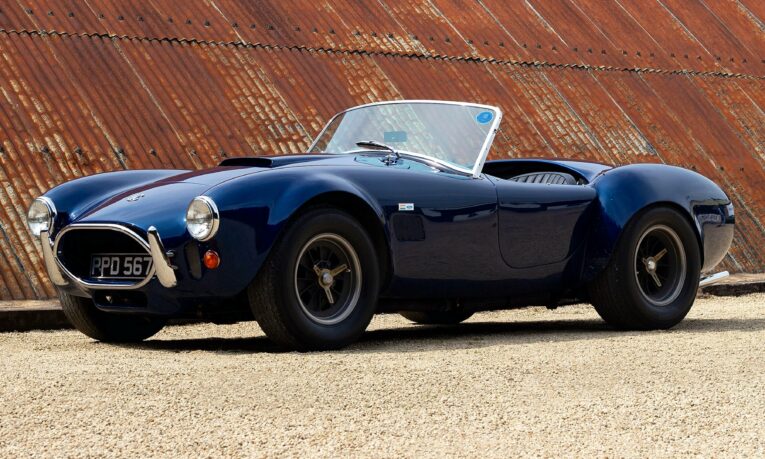
Teamwork makes the dream work. We’re sure you’ve heard that rather hackneyed aphorism before. Perhaps it was during a particularly boring meeting when middle management was trying to inject some sense of motivation into proceedings, or maybe you’ve used it ironically yourself in the past for a laugh. Whatever the case, it is a little trite but when it comes to the US and the UK it does occasionally ring true. Perhaps not where the Revolutionary War is concerned (ahem) but when it comes to the AC Cobra and stuffing an American V8 into a British two-seater sports car, well, birds sing, rainbows flourish and angels float down from above. As far as collaborations go it’s up there with the likes of Lennon and McCartney and Ben Cohen and Jerry Greenfield, to name but two, and whilst it may not have given us the dulcet tones of the Beatles, or the sweet, creamy joy of a pot of Cookie Dough ice cream, the result of said union still provided a beautiful V8 soundtrack and a deliciously fast sports car. Today we honour the coming together of these two nations in automobile form by featuring the AC Cobra on its 60th birthday before we run out of 2022 (where has it all gone?!). But to tell the story of the AC Cobra we first have to tell the story of the AC Ace: the bedrock upon which the Cobra could blossom.
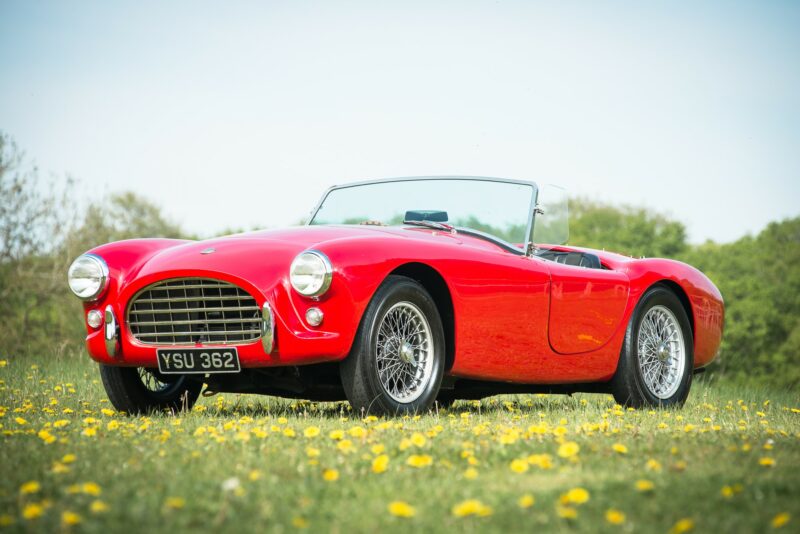
AC Ace
British auto maker AC had been building cars since the turn of the century but it wasn’t until the arrival of the sporty, two-seater Ace, unveiled in 1953 at the London Motor Show, that cemented the company’s reputation as a bona fide sports car manufacturer. Built upon a tubular frame chassis the Ace’s hand-crafted aluminium body, designed by John Tojeiro, was and still is a work of automotive art. The Ace wasn’t merely a show pony, however. Underneath its handsome styling the car featured independent transverse leaf-sprung suspension meaning it handled well too. AC was on to a winner but it knew that engine choice was important if the Ace was going to be competitive and the two-litre overhead cam straight-six originally fitted to the car and developed by AC itself was already far too long in the tooth having been in production since the ’20s. It was a smooth unit but with a rather modest output of around 100bhp it was somewhat discordant with the modern chassis and sweeping lines of the Ace.
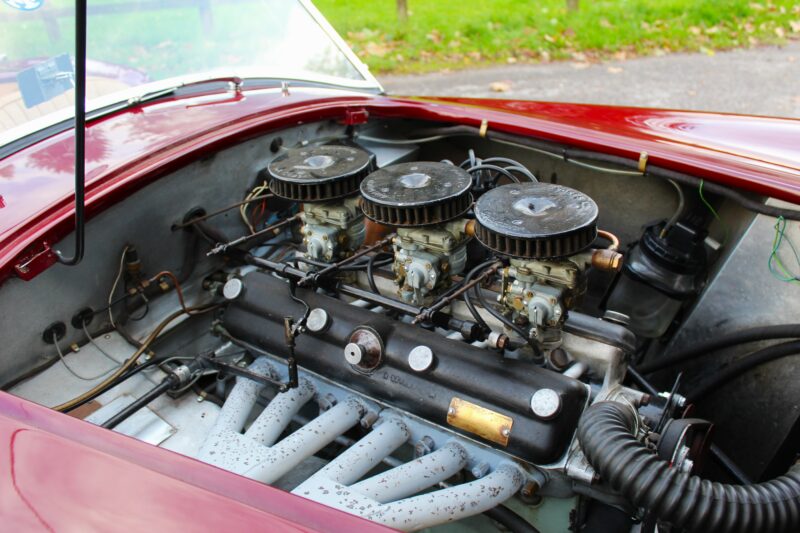
Bristol 2.0-litre six-cylinder
Thankfully, in 1956, compatriots Bristol came up with the goods and mirroring what would later happen with the Cobra, supplied its more powerful engine to the Ace. It was still a 2.0-litre, six-cylinder affair but it was more advanced than the ageing AC unit having been derived from a BMW motor and combined with three Solex downdraught carburettors upped power output of the Ace to around 130bhp in the highest state of tune. This meant a much livelier top speed of almost 120mph, providing the much needed performance boost to match the car’s well-sorted underpinnings and pretty looks. The Ace was now the complete package but that wouldn’t be the end of the engine swap shenanigans and the car would be continuously tweaked over the coming years. 1956 also saw the inclusion of front disc brakes and a replacement for the original Moss gearbox in the form of a custom transmission that utilised parts from the Triumph TR3A and it was around this time, in 1957 to be exact, that AC entered the Ace at the 24 Hours of Le Mans. With Ken Rudd and Peter Bolton behind the wheel the car made a particularly valiant account of itself, finishing in tenth place overall. This result would improve to eighth the following year, proof indeed that the Ace was now a competitive car.
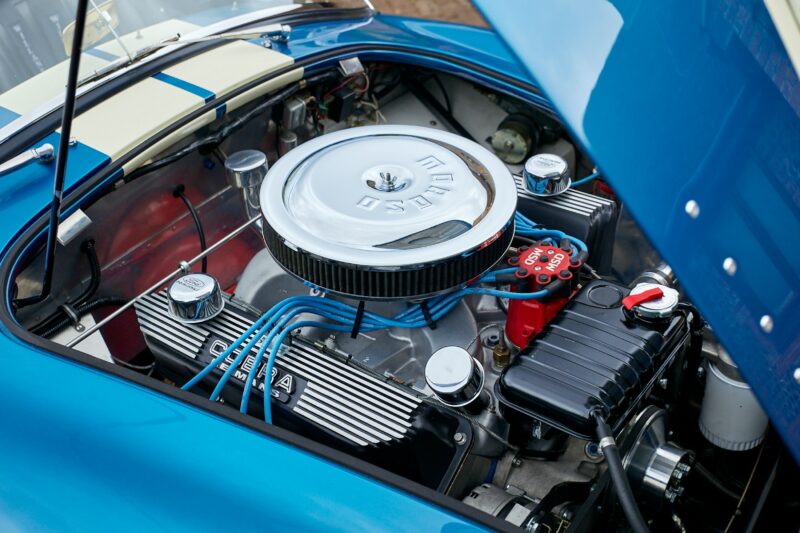
The 427ci 7.0-litre V8 that would be the Cobra’s swansong
Still not satisfied with the car’s performance, however, AC sought out yet another engine to drop in, deciding on a 2.6-litre six-cylinder engine from the Ford Zephyr. This new batch of cars were developed by Ruddspeed – a tuning company set up by accomplished racing driver and engineer Ken Rudd. Yep, the same Ken Rudd as mentioned above. Not only were these models cheaper than the factory Aces but they were also quicker. A new nose and radiator grille set them apart from the standard versions, features that would eventually be carried over for use on the Cobra. The Ford engine, like the Bristol, utilised three Weber or SU carburettors and either a Raymond Mays-fettled cylinder head or a cast iron unit. The hottest versions produced 170bhp, allowing for a top speed of 130mph and a 0–60 time of eight seconds. Tidy. As it would turn out, however, only 37 were made due to the arrival of a certain Carroll Shelby and subsequently the Cobra.
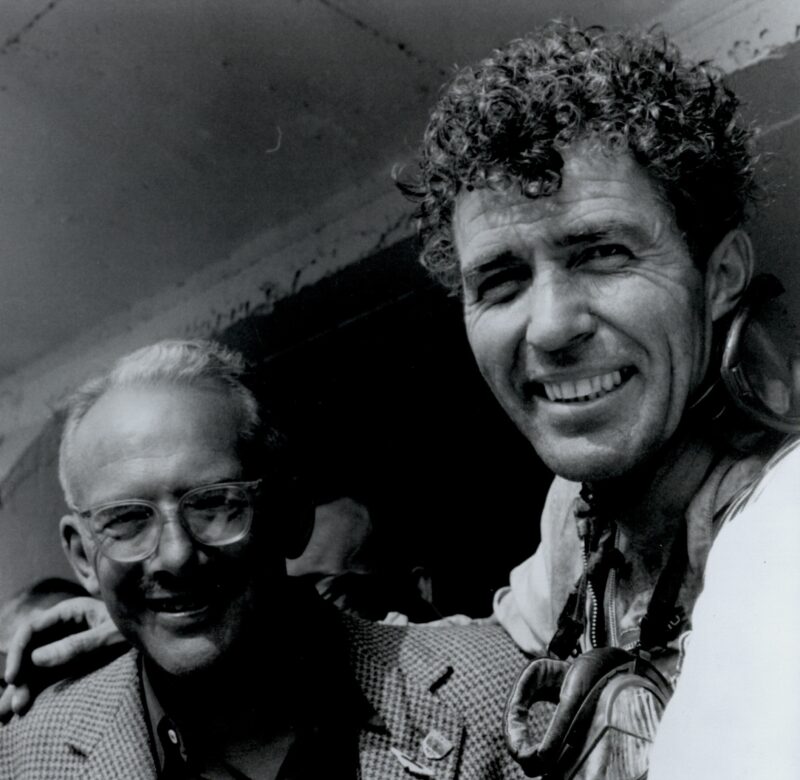
A name now synonymous with sports cars and motor racing Carroll Shelby started his career entirely differently as a humble chicken farmer before enrolling in an Aeronautical Engineering program, later enlisting in the United States Army Air Core and becoming an accomplished pilot and flight instructor. It’s safe to say that speed was most definitely in Shelby’s blood and a successful motor racing career would flourish, beginning in his late twenties and culminating in a win at the 24 Hours of Le Mans in 1959. Unfortunately, due to ongoing heart problems, Shelby retired from competition and chose to concentrate on building cars instead of racing them. Noticing a gap in the US market for a purpose-built American sports car he turned his attention across the pond with the idea of dropping a whopping great V8 into the body and chassis of a lightweight British roadster. Impressed with what AC were doing at the time he asked them if he could have a fettle with one of their cars, to which they kindly obliged, thus setting the wheels in motion that would result in the birth of a legend.
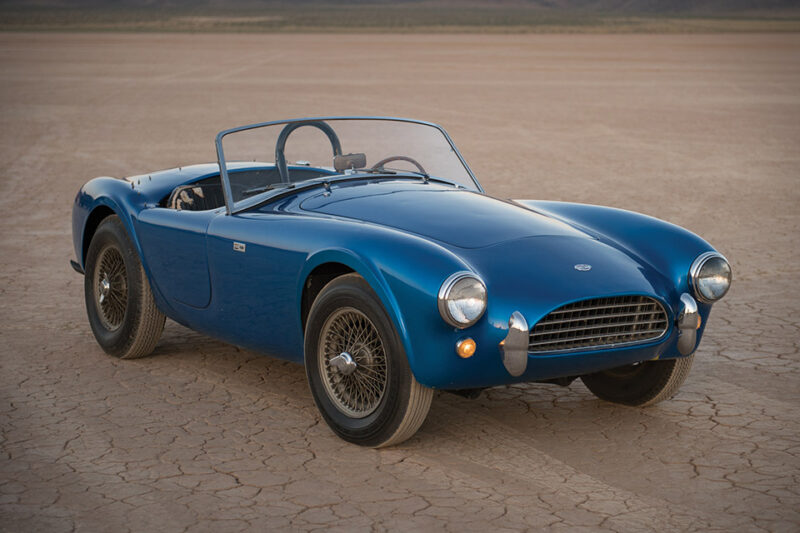
In 1961, with the car secured, Shelby now needed an engine and so he approached General Motors to ask if they could supply him with a suitable V8. GM declined, however, seeing this new concoction as direct competition for its own Chevrolet Corvette. GM’s loss was Ford’s gain though and the big wigs at blue oval HQ green-lit the use of their all-new Windsor 3.6-litre, small-block V8. Shelby was in business and a year later in ’62 AC engineers had built the AC Ace 3.6 prototype that would accommodate the new Ford V8. Known as CSX2000, due to the chassis number, this new model didn’t require much modification to allow for the larger engine as a lot of the work to the front end had already been carried out when the Ford Zephyr six-cylinder mentioned earlier was introduced. The only real fettling was relocating the fuel tank filler and the steering box along with the inclusion of a Salisbury 4HU differential with in-board rear disc brakes from the Jaguar E-Type to be able to handle the extra power.
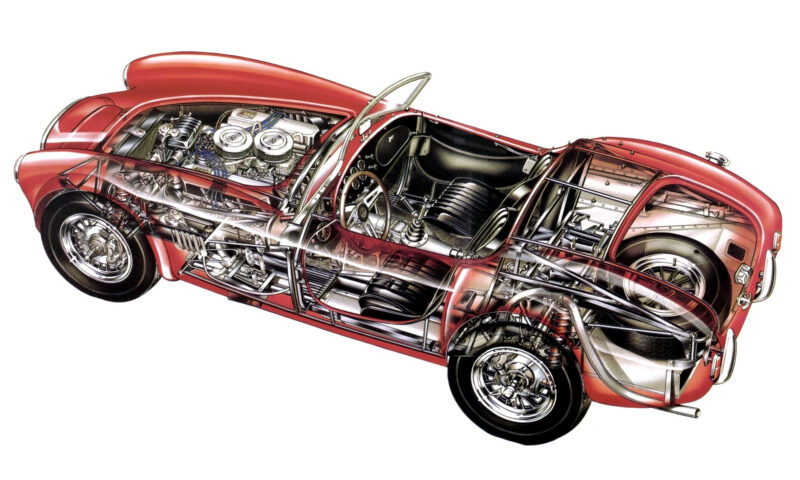
With Shelby’s concept well and truly proven the car was then disassembled and sent off to his team in California where they spent the next eight hours dropping in a larger displacement Ford V8 (4.3-litres now) and getting the car ready for proper testing. The only major amendment made was replacing the inboard rear discs with a more conventional and cheaper setup that mounted the brakes on the outside instead. Production then started on the first Cobras with AC building the cars without an engine or gearbox after which they would be shipped to the US to be assembled by Shelby. 126 of these initial “Mk I” Cobras were made with the first 75 featuring the 4.3-litre engine and the remaining 51 utilising a 4.7-litre version of the Windsor V8. The Mk II arrived in 1963 and featured an updated rack and pinion steering system from the new MGB mated to a Volkswagen steering column.
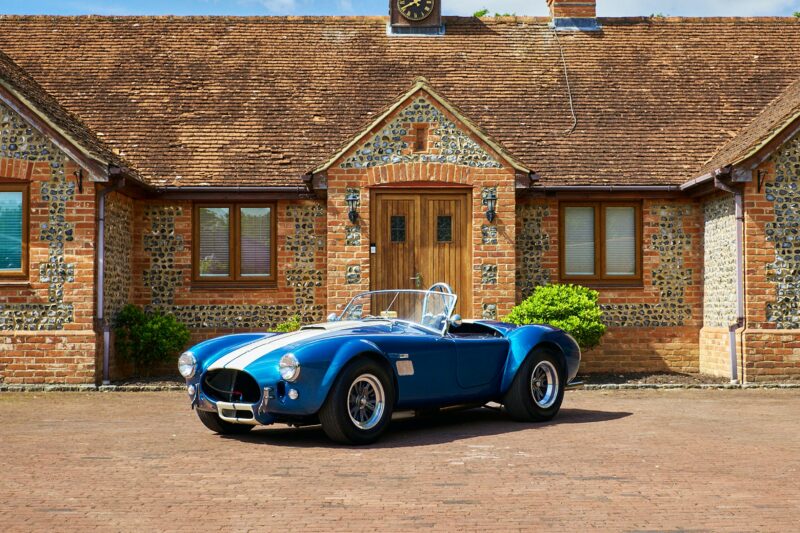
After experimenting (and failing) with even larger engines in order to go faster, such was his mindset, Shelby “settled” on Ford’s 7.0-litre FE V8 equipped with a single 4-barrel 780 CFM Holley carburettor. In order to cope with this monster of an engine the Ace chassis had to be considerably re-engineered. This new version, that would be known as the Mk III, featured larger diameter tubing, coil springs instead of leaf springs, a larger radiator opening and flared arches to accommodate bigger wheels and tires. These Mk III 427 cars were much more muscular and aggressive and are perhaps the best known of the bunch despite not being as commercially successful (and by that we mean a downright financial failure). Not only did it look more menacing but it was also an absolute beast as far as performance was concerned. Standard versions were chucking out 425bhp and 480 lb-ft of torque while the competition cars were producing a whopping 485bhp, giving an eye-watering top speed of 185mph. Utter madness.
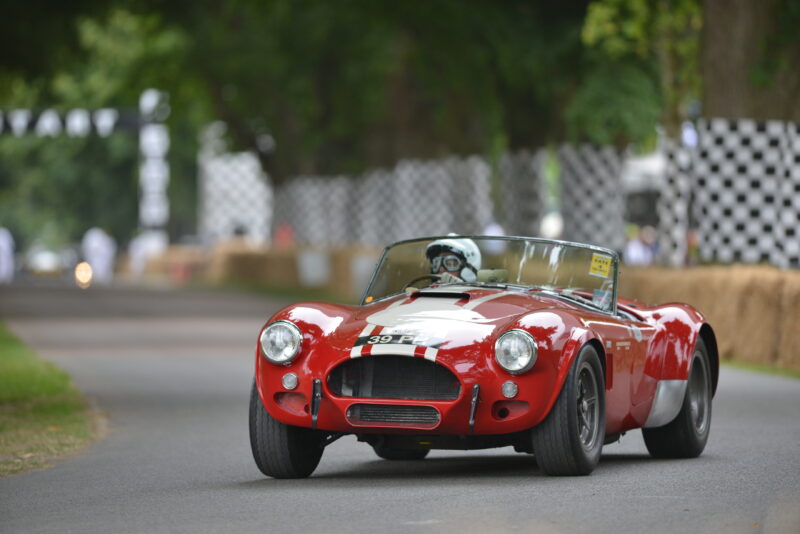
Production officially ended in 1967 with less than 1,000 having been built but the legacy of the AC Cobra lives on, the ripples of which can still be felt today. AC and Carroll Shelby came together to create a road and track legend of which there have been countless imitators and numerous continuation models since, including EV examples, but nothing will ever compare to those original Cobras. Born of one man’s vision to combine the best of British with the best of American the AC Cobra goes down in history as one of the true greats. It wasn’t built to be profitable, nor was it compromised to conform to any pesky regulations. This was a car that was built out of pure passion and one that would pave the way for the muscle car craze to come. You can keep your pop music and your desserts, we’ll take the AC Cobra any day. Many happy returns.


